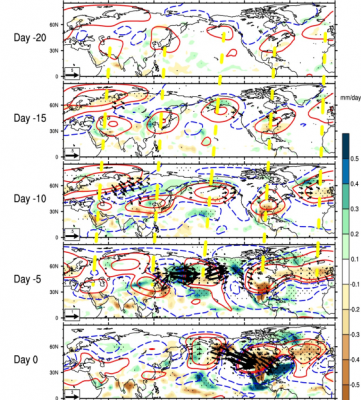Probability of US Heat Waves Affected by a Subseasonal Planetary Wave Pattern
Heat waves are thought to result from subseasonal atmospheric variability. Atmospheric phenomena driven by tropical convection, such as the Asian monsoon, have been considered potential sources of predictability at subseasonal timescales. Midlatitude atmospheric dynamics have been considered too chaotic to allow significant prediction skill of lead times beyond the typical 10-day range of weather forecasts. Here we use a 12,000-year integration of an atmospheric general circulation model to identify a pattern of subseasonal atmospheric variability that can help improve forecast skill for heat waves in the US. We find that heat waves tend to be preceded by 15 to 20 days by a pattern of anomalous atmospheric planetary waves with a wavenumber of 5. This circulation pattern can arise as a result of internal atmospheric dynamics and is not necessarily linked to tropical heating. We conclude that some mid-latitude circulation anomalies that increase the probability of heat waves are predictable beyond the typical weather forecast range.

